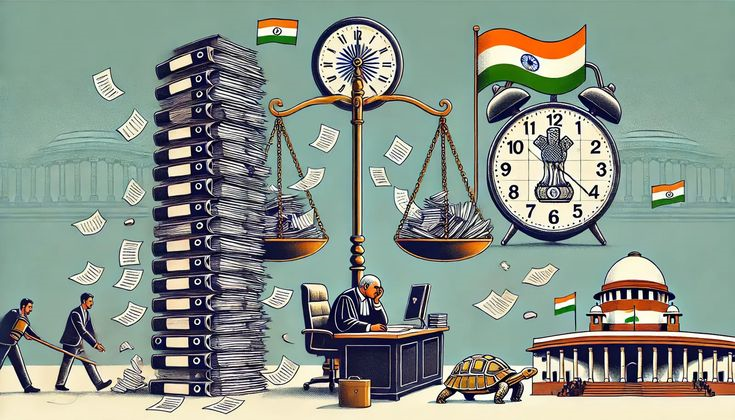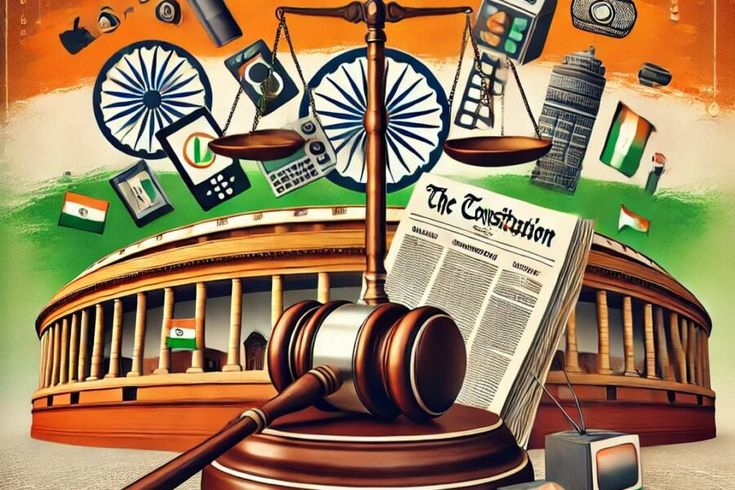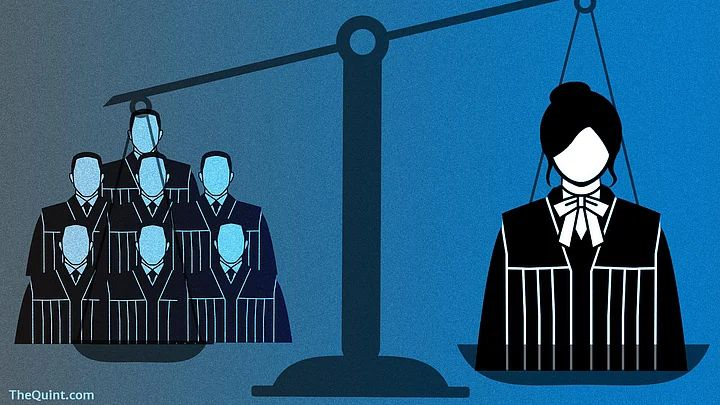Judicial Appointments and the Need for Independence
The appointment of judges to the higher judiciary in India — the Supreme Court and High Courts — is a matter of profound constitutional significance. The integrity, independence, and efficiency of the judiciary depend on a fair and transparent appointment process. Initially, the Constitution of India, under Articles 124 and 217, vested the power of appointment of judges primarily in the President of India, in consultation with the Chief Justice of India (CJI) and other judges.
However, over time, to safeguard judicial independence from executive interference, the Collegium System evolved through judicial interpretations of the Constitution. Later, in an attempt to reform this system and introduce greater accountability, Parliament passed the 99th Constitutional Amendment Act, 2014, establishing the National Judicial Appointments Commission (NJAC).
This essay discusses the Collegium System’s evolution, its working, criticisms, and the potential benefits of appointments through the NJAC, analyzing their impact on India’s constitutional balance.
Constitutional Basis: Articles 124, 217, and 222
The Constitution of India provides the legal framework for the appointment of judges:
- Article 124(2) – Deals with the appointment of Supreme Court judges by the President after consultation with the CJI and such other judges as deemed necessary.
- Article 217(1) – Governs the appointment of High Court judges, requiring consultation with the Governor of the State, the Chief Justice of the High Court, and the CJI.
- Article 222 – Provides for the transfer of judges between High Courts.
Originally, these provisions gave the executive a dominant role in judicial appointments. However, judicial interpretation through landmark cases transformed this scheme to ensure judicial primacy and independence, leading to the Collegium System.
Evolution of the Collegium System through the “Three Judges Cases”
The Collegium System was not explicitly mentioned in the Constitution but evolved through judicial decisions known as the Three Judges Cases:
- First Judges Case (S.P. Gupta v. Union of India, 1981) – The Supreme Court held that the word “consultation” in Articles 124 and 217 did not mean “concurrence,” giving primacy to the executive in judicial appointments.
- Second Judges Case (Supreme Court Advocates-on-Record Association v. Union of India, 1993) – The Court overruled the earlier decision, holding that the CJI’s opinion would have primacy, and appointments must be made in consultation with a collegium of senior judges.
- Third Judges Case (1998 Presidential Reference) – Clarified that the Collegium would consist of the CJI and four senior-most judges of the Supreme Court for Supreme Court appointments, and the CJI and two senior-most judges for High Court appointments.
This evolution effectively transferred appointment power from the executive to the judiciary, ensuring judicial independence, but also raising concerns about lack of transparency and accountability.
Working of the Collegium System
Under the Collegium System, appointments to the higher judiciary are made through a consultative process between the CJI and senior judges. Recommendations are sent to the President of India, who, in practice, acts on the advice of the Collegium.
For Supreme Court appointments:
- The Collegium comprises the CJI and four senior-most judges.
For High Court appointments: - It includes the CJI, two senior-most Supreme Court judges, and the concerned Chief Justice of the High Court.
While the system ensures judicial autonomy, it has faced criticism for opacity, favoritism, and lack of diversity. The absence of statutory backing and limited accountability prompted calls for reform, leading to the creation of the NJAC through constitutional amendment.
The National Judicial Appointments Commission (NJAC): An Overview
The 99th Constitutional Amendment Act, 2014, inserted Articles 124A, 124B, and 124C, establishing the National Judicial Appointments Commission (NJAC) to replace the Collegium System.
Composition of the NJAC (Article 124A):
- Chief Justice of India (Chairperson)
- Two senior-most Supreme Court judges
- Union Law Minister
- Two eminent persons (nominated by a committee comprising the CJI, Prime Minister, and Leader of Opposition in the Lok Sabha)
The NJAC was designed to make judicial appointments more transparent, participatory, and accountable, by including members from both the judiciary and the executive. However, it was struck down by the Supreme Court in Supreme Court Advocates-on-Record Association v. Union of India (2015), holding it unconstitutional for violating the basic structure of the Constitution—specifically, the independence of the judiciary.
Advantages of Appointments through the NJAC
Despite being struck down, the NJAC model had several potential advantages that could have addressed the flaws of the Collegium System:
- Transparency:
The NJAC allowed for clear procedures and disclosure of criteria for judicial appointments, reducing the perception of secrecy associated with the Collegium System. - Accountability:
By including the executive and eminent persons, it introduced checks and balances, ensuring judicial appointments were not confined to a closed group of judges. - Public Confidence:
A mixed composition enhanced public trust by showing that appointments were inclusive and representative. - Merit and Diversity:
The NJAC could have facilitated broader representation from various social and regional backgrounds, promoting diversity in the higher judiciary. - Reduction in Nepotism:
By involving multiple stakeholders, NJAC reduced the chances of favoritism and subjective selection that critics alleged existed under the Collegium System. - Constitutional Accountability:
The inclusion of constitutional authorities like the Prime Minister and Leader of Opposition ensured democratic participation, keeping the judiciary accountable to the people through representative institutions.
While these advantages were significant, the Supreme Court maintained that executive interference in judicial appointments could undermine judicial independence, leading to the NJAC’s invalidation.
Judicial Independence vs. Accountability: The Constitutional Dilemma
The Collegium System and the NJAC debate highlight a core constitutional dilemma: how to balance judicial independence with public accountability. The Supreme Court in the 2015 NJAC Judgment recognized the need for reform, but struck down the law as unconstitutional.
However, the Court also acknowledged the legitimacy of criticism of the Collegium System’s lack of transparency. Subsequently, it initiated internal reforms, including publishing Collegium recommendations and reasons online — a significant step toward transparency without compromising independence.
Thus, the debate continues, emphasizing that while judicial independence is essential, institutional accountability and openness are equally necessary for public faith in the judiciary.
Toward a Balanced Reform
The Collegium System remains the operative mechanism for judicial appointments in India after the striking down of the NJAC. While it ensures judicial independence, it also calls for greater transparency and procedural clarity.
The NJAC model, though unconstitutional, provided a blueprint for reform, emphasizing the need to balance judicial independence with democratic accountability. Future reforms should aim to create a hybrid model that preserves judicial primacy while including limited oversight from other constitutional authorities.
In essence, the ultimate goal is to ensure that the appointment of judges is fair, transparent, and reflective of constitutional morality — maintaining the judiciary as the guardian of the Constitution and the protector of citizens’ rights.
Mnemonic to Remember – “C.A.S.E.J.”
Use the mnemonic “C.A.S.E.J.” to remember the key concepts related to judicial appointments and NJAC:
- C – Collegium System: Evolved from judicial interpretation ensuring judicial primacy.
- A – Articles 124, 217, 222: Constitutional provisions governing judicial appointments.
- S – Supreme Court Cases: The Three Judges Cases shaped the Collegium structure.
- E – Evolution of NJAC: 99th Amendment introduced NJAC for transparency and accountability.
- J – Judicial Independence: Supreme Court struck down NJAC to preserve judicial autonomy.
Mnemonic Meaning: “Collegium, Articles, Supreme Court Cases, Evolution, Judicial Independence” — encapsulating the entire debate over judicial appointments in India.
About lawgnan
Explore the complete guide to Judicial Appointments in India only on Lawgnan.in. Understand how the Collegium System evolved through landmark judgments, why the National Judicial Appointments Commission (NJAC) was introduced, and how judicial independence and accountability are balanced under the Constitution. Perfect for law students, judiciary aspirants, and UPSC candidates, this article simplifies Articles 124, 217, and 222 with real case references. Strengthen your understanding of constitutional law, judicial ethics, and the evolving debate over transparency in appointments. Visit Lawgnan.in today to master judicial concepts through detailed legal insights and expert explanations.




